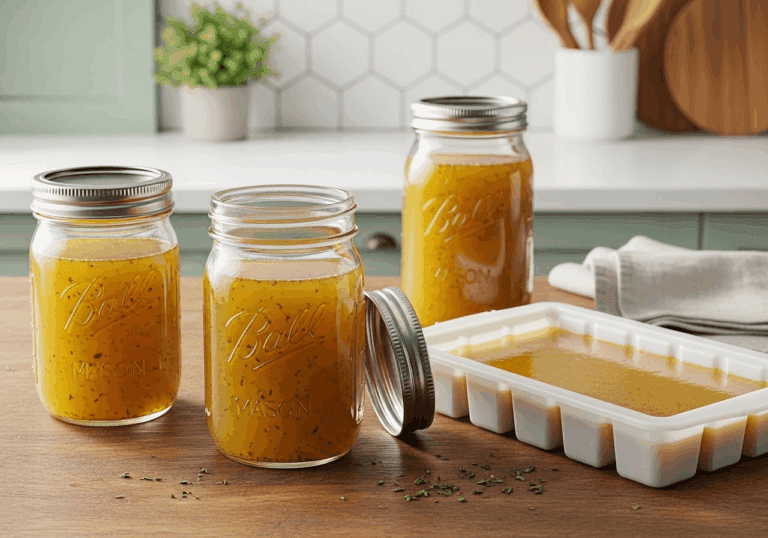Picture this: I’m in my kitchen, trying to impress my boys with a stew, and I grab a carton of store-bought stock. Big mistake. The result? A dish so flat it could’ve been a paper plate. Never again, y’all! Want to know the secret to a homemade stock that makes your soups and sauces taste like a hug from a Caribbean grandma? It’s a pressure cooker stock recipe, and it’s about to become your kitchen superpower. In just about an hour, you’ll have a collagen-rich stock that’s golden, fragrant, and miles better than anything in a box. Homemade broth vs stock? Stock’s the deep, gelatinous stock base packed with flavor, while broth’s lighter and bouillon’s just a salty cube we’re not messing with. Let’s glow it up in that kitchen, shall we?
What You’ll Need for Pressure Cooker Stock: Ingredients & Tools

Before we dive into how to make stock, let’s gather our flavor squad. This is simple stuff you probably already have, so no stress.
Ingredients
Use a Nordic Ware Aluminum Half-Sheet Pan (https://amzn.to/43gJQt8) to roast bones evenly before they hit the pot.
| Stock Type | Best Parts | Extra Boosters |
|---|---|---|
| Chicken | Frames, wings, feet | Perfect if you’re learning how to make chicken stock |
| Beef | Stew bones & marrow | Tomato paste = brown color |
| Lamb | Shanks or bones from legs | Rosemary, pepper |
| Turkey Carcass | Post-holiday bones | Sage & thyme |
| Seafood | Fish frames, shrimp shells—great for pressure cooker fish stock or homemade shrimp stock | Ginger |
| Vegetable | Carrot peels, onion skins, pumpkin skins, celery | A strip of kombu to mimic beefy depth |
| Mushroom | Dried, re-hydrated shiitake | Boosts umami without meat |
- Bones or scraps: Chicken bones for how to make chicken stock, beef for a hearty base, lamb for how to make stock from lamb bones, a turkey carcass for post-holiday magic, or fish/shrimp shells for homemade seafood stock.
- Aromatics: One onion (halved, skin on for color), two carrots, two celery stalks, a few garlic cloves, a sprig of thyme, and a couple of bay leaves. Use a Digital Kitchen Scale for accurate ingredient ratios.
- Optional flavor boosters: A pinch of Scotch bonnet for heat, parsley stems, a tablespoon of vinegar or mushrooms for homemade mushroom stock.
- For veggie stock: think onion skins, carrot tops, or kombu for vegan umami.
Tools
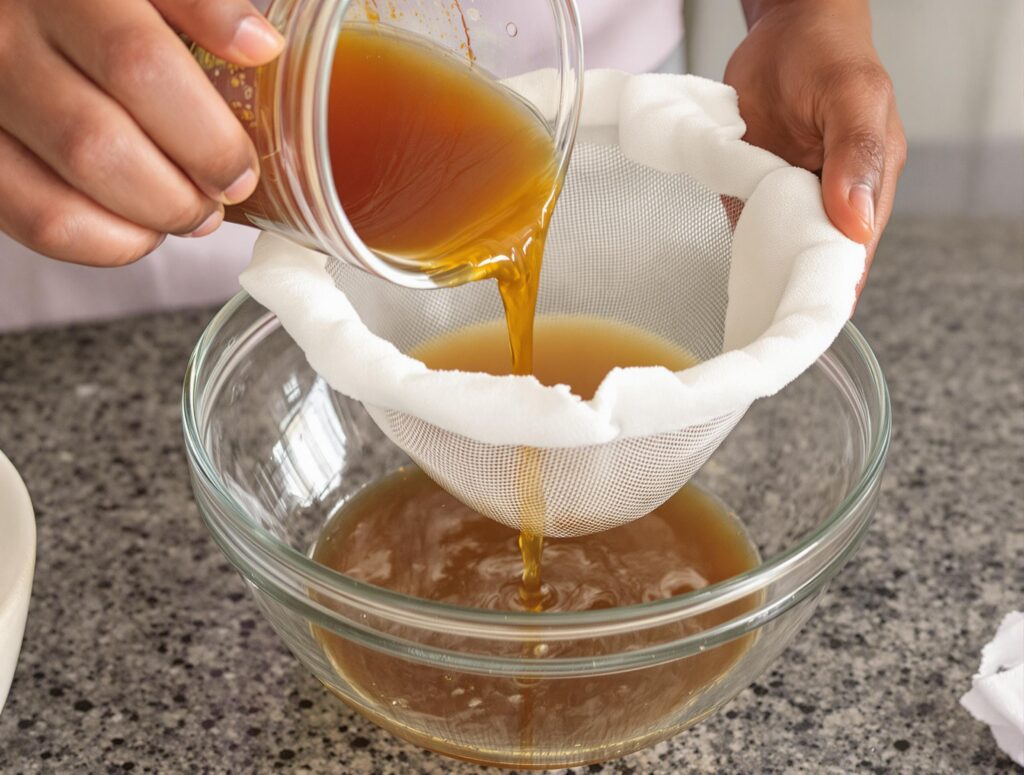
- A Presto pressure cooker (or Instant Pot — self monitoring).
- A sturdy wooden spoon and a fine mesh strainer stock tool for that velvet-smooth finish.
- A nut milk bag will give an even better strain.
Pro tip: Don’t skip roasting those bones and those veggies—chicken, lamb, or pumpkin skins, if you can roast it first that will make a major difference. That toasty, caramelized sizzle? That’s where the flavor lives. For how to make stock with shrimp shells or fish, just rinse well—no roasting needed.
Oh, and types of stocks and sauces? Chicken’s versatile, beef’s bold, lamb’s luxe, turkey’s cozy, homemade fish stock is light and briny (think fish tea), and veggie’s a plant-based glow-up. Pick your player, and let’s get cooking.
Step-by-Step: Making the Stock
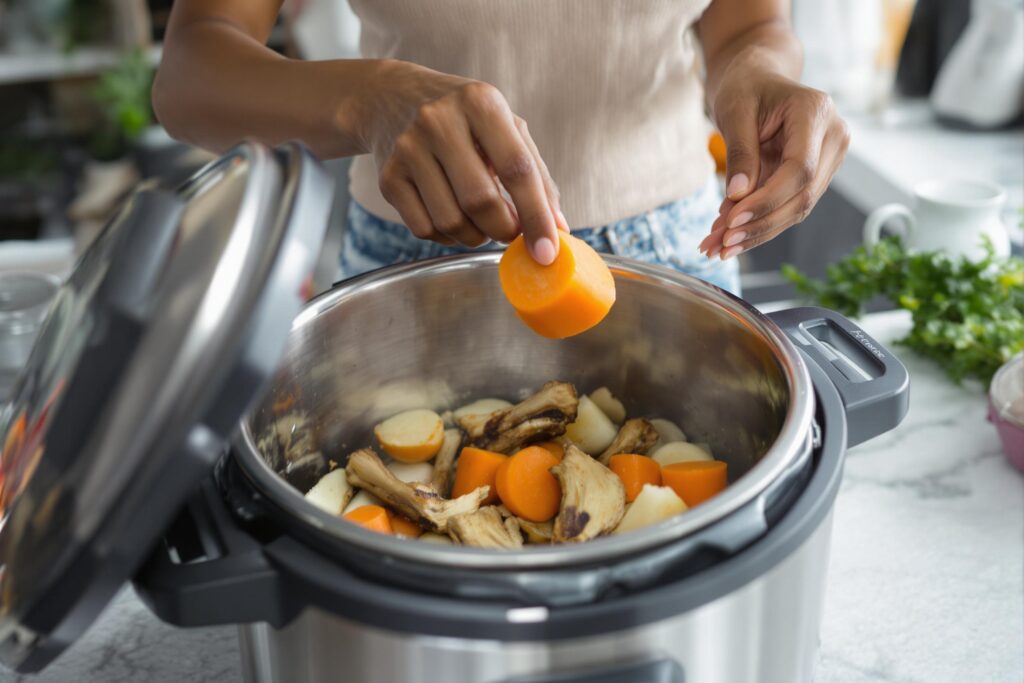
Ready to master how to make stock from bones or scraps? This takes about an hour total, and it’s easier than you think. Here’s your pressure cooker stock plan.
- Prep the Bones: Preheat your oven to 400°F. Spread chicken, beef, lamb, or turkey carcass bones on an Aluminum Half-Sheet Pan and roast for 30 minutes until they’re golden and smelling like heaven. That caramelized crust is your flavor foundation, baby. For pressure cooker fish stock, skip the oven—just rinse shells well to avoid bitterness.
- Load the Pressure Cooker: Toss your roasted bones (or shells/scraps) into the pressure cooker. Add onion, carrots, celery, garlic, thyme, bay leaves, and a tablespoon of vinegar. Cover with water, but don’t go past the max fill line—about 6-8 cups usually does it.
- Cook It: Seal the lid, set to high pressure, and cook for 45 minutes (how long to pressure cook stock). Use a natural pressure release (about 15 minutes) for the best flavor. Total: Roughly an hour, way faster than the 6-8 hours you’d need for a slow cooker.
- Strain & Store: Pour the stock through a fine mesh strainer stock tool into a large bowl. Want how to make stock clear? Skim off any foam with a spoon while it’s hot or use a Grade 90 Unbleached Cheesecloth Roll for extra clarity. For degreasing finished stock, use an OXO Good Grips 4-Cup Fat Separator. Let it cool, then store in mason jar stock storage (fridge: how long is homemade stock good for—4-5 days; freezer: 3-6 months) or freeze in Souper Cubes 1-Cup Silicone Freezer Tray for quick flavor hits.

Mistakes to dodge: Don’t overfill the cooker—it’ll mess with the pressure. And that vinegar? Don’t skip it; it pulls out the bone broth collagen for that glossy, rich texture. For homemade shrimp stock, stick to 45 minutes max to keep it fresh, not fishy.
Flavor Academy: Why This Works
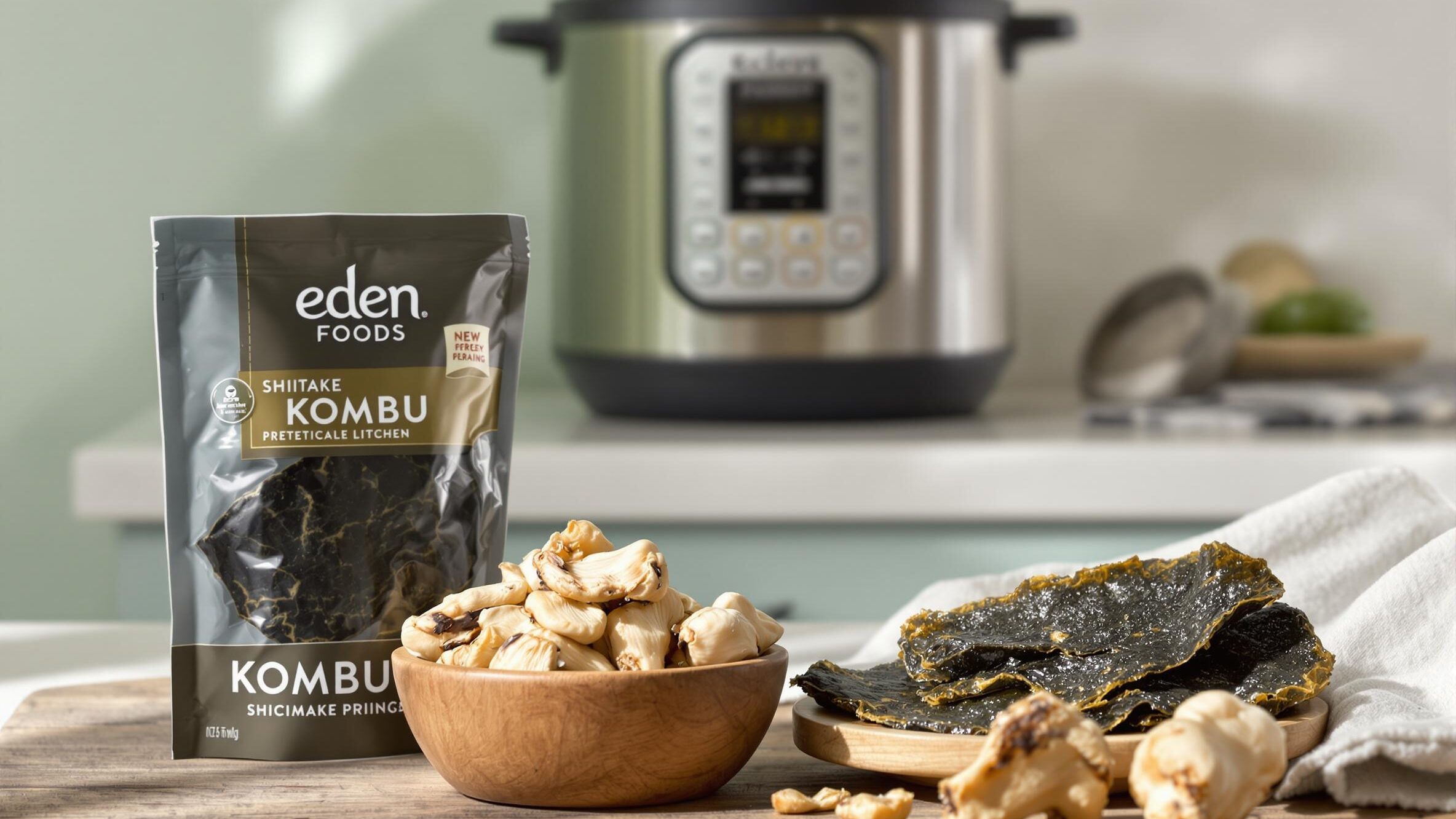
Here’s the deal: a pressure cooker’s like a flavor time machine for homemade stock recipe. It extracts all that gelatinous stock goodness in 45 minutes versus 6-8 hours in a slow cooker or a whole day simmering. That high-pressure heat breaks down bones or veggies into a velvety stock that’s packed with depth. The vinegar? It’s the unsung hero, pulling out minerals and collagen for a stock that’s is homemade stock healthy—nourishing without being preachy.
I’m a fast girl so I rather throw everything into my pressure cooker and move it. Well, don’t forget to set a timer if doing the stovetop, but electric instant pots can be preprogrammed.
Broth vs Stock vs Bouillon
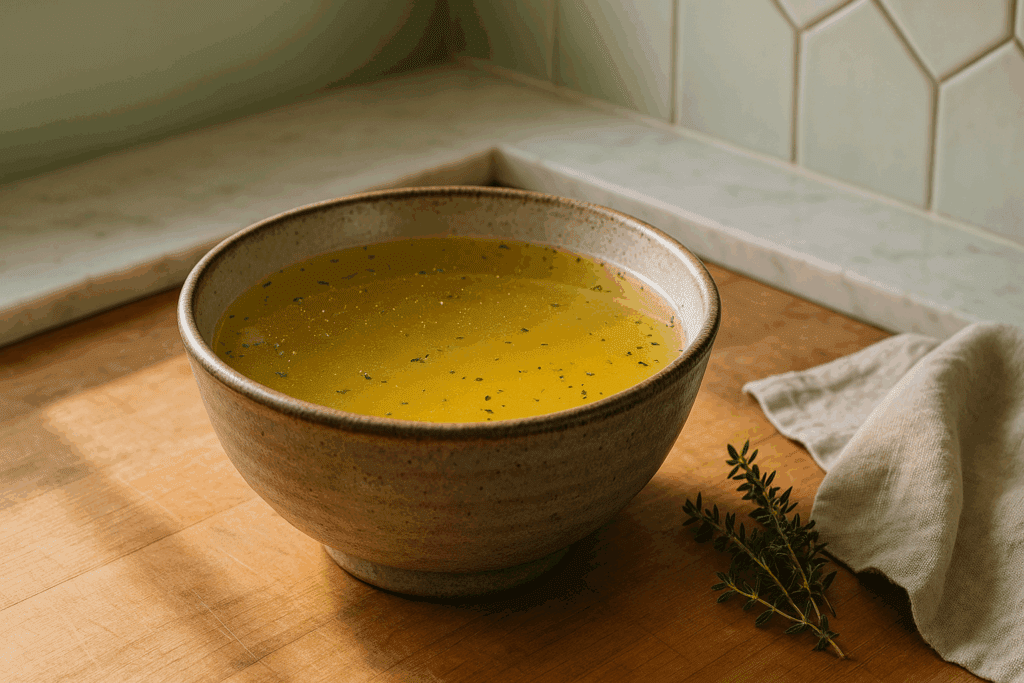
Let’s clear up broth vs stock vs bouillon: Stock’s a little lighter because it’s mostly scraps and meats. Broth’s often seasoned and has way more collagen because it’s more bone-based, good for sipping by itself. Bouillon? Just a salty cube, and we’re not about that life. Bouillion is good to supplement, not replace.
And homemade chicken stock vs store bought? Store-bought’s flat and overly salty; homemade’s a flavor bomb that’s pure love. My rice & peas started singing the first time I used my own stock—trust me, your mouth will thank you. I don’t even buy the store stuff anymore!
Glow-Up Tips: Taking Your Stock to the Next Level

Now, let’s make this stock a star. Here are some Chef Sam tricks to elevate it, plus specific glow-ups for different types.
General Glow-Ups:
- Toss in a knob of ginger or a stalk of lemongrass for a zesty kick.
- Stir in a tablespoon of miso for umami that’s like a warm hug.
- Add a splash of coconut milk for a Caribbean-inspired creamy stock—perfect for rice dishes.
- To reduce fat content, try using a fat separator.
- Stock to Gravy: For how to make stock into gravy, reduce a cup of stock with a tablespoon of cornstarch in a pan. Whisk until it’s silky-smooth. “Restaurant-level gravy, but make it weeknight.”
This stock’s so good, it’s practically flirting with your tastebuds. You already know!
Other Creative Uses for Stock
Quinoa, ramen, gravy, demi-glace—you name it.
Your Kitchen, Your Power
This homemade stock is your kitchen’s love language, plain and simple. You don’t need a chef’s hat—just a pressure cooker and some bones, shells – my boys lose it when they smell this simmering—it’s like a restaurant, but it’s just us, laughing around the table. Make this stock, and trust me, your family will beg for seconds. So go on, glow it up. Your soups, your sauces, your soul—they’re all gonna thank you.

